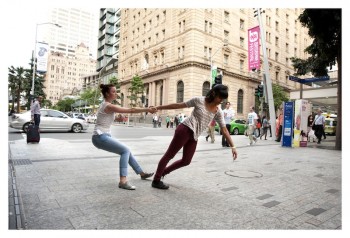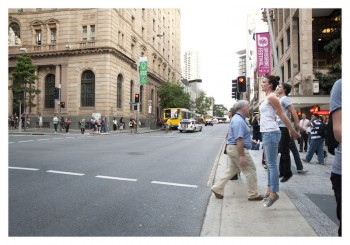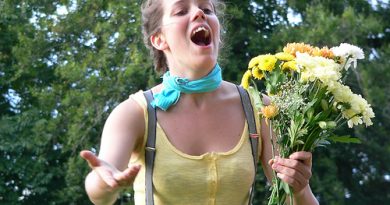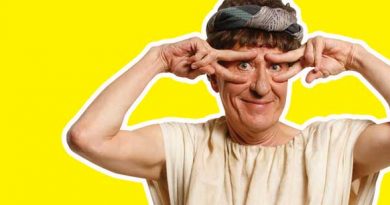Fifteen

At around twenty to five on Wednesday afternoon, headphones were handed out to those-in-the-know outside Louis Vuitton in the Queen Street mall. The group was slowly gathering to witness the unveiling of Fifteen, an experimental movement piece choreographed by Brisbane’s Liesel Zink which was about to be performed in the peak-hour pedestrian traffic.
The Brisbane Festival’s, Under The Radar program this year called for works that expose new ways to explore the notion of space and Fifteen identifies human behaviour and the fifteen centimetre radius of personal space that exists around the individual (Zink’s fascination with psychology drives her work). While we wait, a well layered soundscape by Mike Willmett plays through our headsets and encourages our minds to take in the hustle and bustle of the myriad sights that surround us. Willmett’s soundscape becomes a soundtrack for the performance and aside from a lengthy and unnecessary, playschool sounding narration by Robbie Obrien towards the end, the soundtrack is certainly engaging.
At first, it is not certain who is the spectacle – the ebb of peak-hour pedestrians beginning their routine scurry home or the strange group of people with antenna headphones seeming to mill about in the mall. People who are not in-the-know invaded the imported audience benches. This demonstrates the idea nicely; some brazenly insert themselves into any space available; others shy away dreading that they should interfere, whilst others again carry on oblivious. As the hour tolled, the audience watched the crowd of commuters, wondering who would emerge as our performers; four people appeared, walking briskly, blending in, but lapping us – the experiment had just begun.

For the next fifty minutes we were treated to something that was part flash mob and part gorilla theatre as Zink, Sammie Williams, Tyler Hawkins and Robbie Obrien performed both in and around, with and with-out the pedestrian traffic. There are no ground-breaking statements here; we all know and use the commuter convention that lie beneath the blank expressions, but staging this piece with-in the melee itself inspires great expectations.
Fifteen is a fun and novel work but I have just one burning question for the collaborators; why make your audience conform to traditional theatre seating? As an audience member, I felt confined and left out of the experimental experience and it immediately gave the game up to the pedestrians. I was disappointed by the lack of pedestrian engagement in what was happening around them but unsure if this was because the two rows of seated audience quickly clued them in or that the same crowd had passed the show during the several days prior and were already aware of it. That is the risk with art work that relies on public reaction. When I read the blurb for Fifteen, I imagined following the artists, be-headphoned, and choosing my own viewing distance based on my own preferences to the fifteen centimetre rule. This is a work of great potential but the boundaries should be pushed a little further.
As the evening light settled over the teaming Edward street entry to the mall, the four performers blended into the crowd and became invisible, finally vanishing from sight again. Presumably, we all replaced our headsets with our own earphones and headed off for our buses, commuter faces firmly applied.



Gorilla theatre?